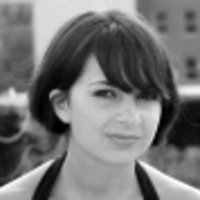UPDATED: Last night, a march of extremist Israeli settlers took over the Muslim Quarter of the Old City of Jerusalem, filling the streets with Israeli Defense Forces (IDF) soldiers enforcing a strictly “Jews only” policy on the streets of the Muslim Quarter that put the nearly 30,000 Palestinian residents of the Muslim Quarter under curfew until the march was over.
This follows a week of attacks of this nature on Al-Aqsa Mosque—the third most holy site in Islam just a few meters away from the Dome of the Rock, the iconic golden crowning glory of Jerusalem. Under normal circumstances, though anyone can enter the Muslim Quarter of the Old City, only practicing Muslims are allowed to enter the inside of Al-Aqsa Mosque. However, in recent years extremist Israeli settlers—protected by IDF soldiers or Israeli police—have stormed the mosque, claiming that it should be destroyed so that the Third Temple can be erected in its place.

Recently, due to heightened tensions leading to violent clashes between Palestinian protesters and Israeli soldiers in the West Bank that many Israelis fear could lead to a Palestinian uprising, the attacks on the Al Aqsa Mosque compound have intensified.
ADVERTISEMENT
This most recent string of attacks started on Sunday when an Israeli soldier attacked Palestinian female students inside of the mosque and deliberately stepped on and destroyed her Qu'ran when it fell to the floor, according to the Israeli-Arab NGO Al-Aqsa Foundation for Endowment and Heritage. A few days later on Wednesday, eight Israeli settlers accompanied by soldiers entered the mosque during prayers and ripped off a woman’s hijab—a traditional head covering required for worship at the mosque. On Friday—International Women’s Day—clashes erupted when dozens of Israeli policemen were present at the mosque compound as Palestinian worshippers gathered for noon prayers. According to Israeli Police Spokesperson Mickey Rosenfeld, police entered the compound when Palestinians responded to their presence with rocks and two petrol bombs--molotov cocktails. According to Palestinian sources, including a video account, the soldiers raided the compound firing teargas and stun grenades, pushing several women and injuring one journalist.
Many reports claim that these violent attacks are in response to Palestinian tensions surrounding President Barack Obama’s upcoming visit to Israel. However, according to residents of Jerusalem—both in the Muslim Quarter of the Old City and in the surrounding Arab neighborhoods—these attacks are routine.
“The settlers and soldiers are trying to turn Al Aqsa into the Ibrahimi Mosque in Hebron,” Saleh, a Palestinian activist living in the Sheikh Jarrah neighborhood of East Jerusalem who prefers not to publish his last name, told me.
Hebron’s Ibrahimi Mosque was once (and still is) one of the most important religious sites in Islam. However, since the Baruch Goldstein massacre in 1994, when the radical right-wing Israeli settler opened fire inside the mosque, killing 29 Palestinians, the mosque has been divided in two. One side is a mosque, the other a synagogue. Although this creates the illusion of co-existence between the Muslims and Jews of Hebron—an important city for both religions—this is not the case. Even though the massacre was perpetrated by an Israeli settler, it was the Palestinians who suffered the consequences, the most renown of which was the closure of Shuhada Street—the main artery through Hebron—to all Palestinian foot traffic.
In the center of Hebron’s Old City—from which Palestinians are now completely banned—there is graffiti that shows the skyline of Jerusalem. However, instead of the golden dome of Al-Aqsa Mosque rising from the walls of the Old City, the Third Temple—the Holy Jewish site that the most extreme settlers wish to erect once Al-Aqsa Mosque has been destroyed—is depicted.
The parallels are definitely present.
“We can’t let that happen here,” Saleh continues, while we drive through Jerusalem. “I am going to show you a very special place.”
Saleh takes me to what looks like a canvas tent on top of a home in East Jerusalem. He tells me it is a makeshift mosque—meant for those who have been barred from worshipping at Al-Aqsa Mosque.
“Here, take this,” he says, throwing me a colorful scarf to use as a hijab. Instead I opt to place my own scarf over my head out of respect for those who are worshipping.
Inside the makeshift mosque the scene is lively, with at least 100 worshippers—men and women alike—serving tea and coffee between prayers. On the walls, there are pictures of Samer Issawi, the Palestinian prisoner who has been on hunger strike for more than 200 days, and the hunger strikers who have joined him in solidarity. There are also several pictures of Al-Aqsa Mosque being stormed by armed settlers. It is clear that this is not only a space for worship; it is also a political space to resist the occupation. Whether or not Al Aqsa Mosque will eventually become Ibrahimi Mosque—and Jerusalem will eventually become Hebron—the violent displacement that clears the way for extremist Israeli settlers to claim the land is happening in front of our eyes.
UPDATE: This post was updated to reflect the following changes: Israeli police entered the Al Aqsa mosque compound, not the mosque itself; adjusting an errant claim of a "military curfew" to reflect that a request was made that residents stay in their homes; the claim of a destroyed Qu'ran were sourced to the Al Aqsa Foundation For Endowment and Heritage; adding the injury to an Israeli police officer; and adding sourcing and a video account of clashes. We regret the errors.





